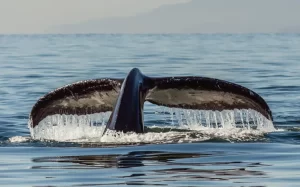When it comes to saving the planet, one whale is worth thousands of trees.
Scientific research now indicates more clearly than ever that our carbon footprint—the release of carbon dioxide (CO2) into the atmosphere where it contributes to global warming through the so-called greenhouse effect—now threatens our ecosystems and our way of life. But efforts to mitigate climate change face two significant challenges. The first is to find effective ways to reduce the amount of CO2 in the atmosphere or its impact on average global temperature. The second is to raise sufficient funds to put these technologies into practice.

Many proposed solutions to global warming, such as capturing carbon directly from the air and burying it deep in the earth, are complex, untested, and expensive. What if there were a low-tech solution to this problem that not only is effective and economical, but also has a successful funding model?
An example of such an opportunity comes from a surprisingly simple and essentially “no-tech” strategy to capture more carbon from the atmosphere: increase global whale populations. Marine biologists have recently discovered that whales—especially the great whales—play a significant role in capturing carbon from the atmosphere (Roman and others 2014). And international organizations have implemented programs such as Reducing Emissions from Degradation and Deforestation (REDD) that fund the preservation of carbon-capturing ecosystems.
Adapting these initiatives to support international efforts to restore whale populations could lead to a breakthrough in the fight against climate change.
The carbon capture potential of whales is truly startling. Whales accumulate carbon in their bodies during their long lives. When they die, they sink to the bottom of the ocean; each great whale sequesters 33 tons of CO2 on average, taking that carbon out of the atmosphere for centuries. A tree, meanwhile, absorbs only up to 48 pounds of CO2 a year.
Protecting whales could add significantly to carbon capture because the current population of the largest great whales is only a small fraction of what it once was. Sadly, after decades of industrialized whaling, biologists estimate that overall whale populations are now to less than one fourth what they once were. Some species, like the blue whales, have been reduced to only 3 percent of their previous abundance. Thus, the benefits from whales’ ecosystem services to us and to our survival are much less than they could be.
But this is only the beginning of the story.
Continue reading the article here on the IMF website >>>
More reading:
Whales and Carbon Sequestration: Can Whales Store Carbon?
Whales help store carbon. Scientists are trying to figure out just how much.



